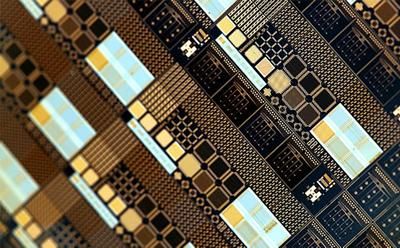CYBATHLON Championship for Athletes with Disabilities.
Watch the Cybathlon live here on 8 October. Livestreaming will start from 9.30 a.m.
Posted in futurism
In Brief.
A trio of European scientists brought home the 2016 Nobel Prize in Chemistry. Jean-Pierre Sauvage, Sir J. Fraser Stoddart and Bernard L. Feringa were awarded 8 million Swedish krona for their work on molecular machines.
Whenever we lose someone close to us, there’s an inclination, a need even, to sort through our memories of that person. Memories not just in our minds, but our digital memories too—emails, texts, photos, videos, social media posts.
But eventually, we have to stop looking through those texts and photos, because after a while, it’s like listening to a song on repeat for too long. The memories are static, they will never change, shift, and grow like the real person, and you just have to move on.
When Eugenia Kuyda lost her best friend, Roman Mazurenko, she wanted to memorialize him in a different way. As the cofounder of Luka, an artificial intelligence startup which recommends books and restaurants through a chat interface, Kuyda worked with her engineering team to collect thousands of Mazurenko’s texts and create a chatbot based on his personality.
In Brief.
Robots, for all their helpfulness in performing tasks that we would rather not do (usually because those tasks are dangerous or boring), first need to be coded in order to do the work. These specific sets of commands tell the machines what exactly they need to do and define how to do it.
Self-driving car testing in California is becoming a badge of progress for companies working in the space. Only 17 companies in total have the honor, including two just added to the list: Wheego Electric Cars, and Valeo North America.
The Wall Street Journal reports that both these new companies now have approval to run tests with a single vehicle each, and four drivers per team. That might not sound like much, but it’s a foot in the door, and membership in the club is itself somewhat testament to how much the companies have already accomplished, since the other members include major carmakers like Tesla, Cruise (which got its license before being acquired by GM), promising startup Drive.ai, and Baidu, to name a few.
The new members are interesting additions: Wheego is an electric carmaker which got its start taking Chinese-Built cars, outfitting them with battery’s and electric motors in the U.S. and putting them on the road. The company now says it builds electric vehicles designed “for a global market,” and focuses on the benefits of connected tech in making vehicles aware of their surroundings.
“Augmented reality offers designers and engineers new tools and artists a new palette, but there’s a dark side to reality-plus.”
Neural Nanonics here we come: “Could lead to future autonomous, fully implantable neuroprosthetic devices”

A bio-inspired electronic device called a memristor could allow for real-time processing of neuronal signals (spiking events), new research led by the University of Southampton has demonstrated.
The research could lead to using multi-electrode array implants for detecting spikes in the brain’s electrical signals from more than 1,000 recording channels to help treat neurological conditions, without requiring expensive, high-bandwidth, bulky systems for processing data. The research could lead to future autonomous, fully implantable neuroprosthetic devices.